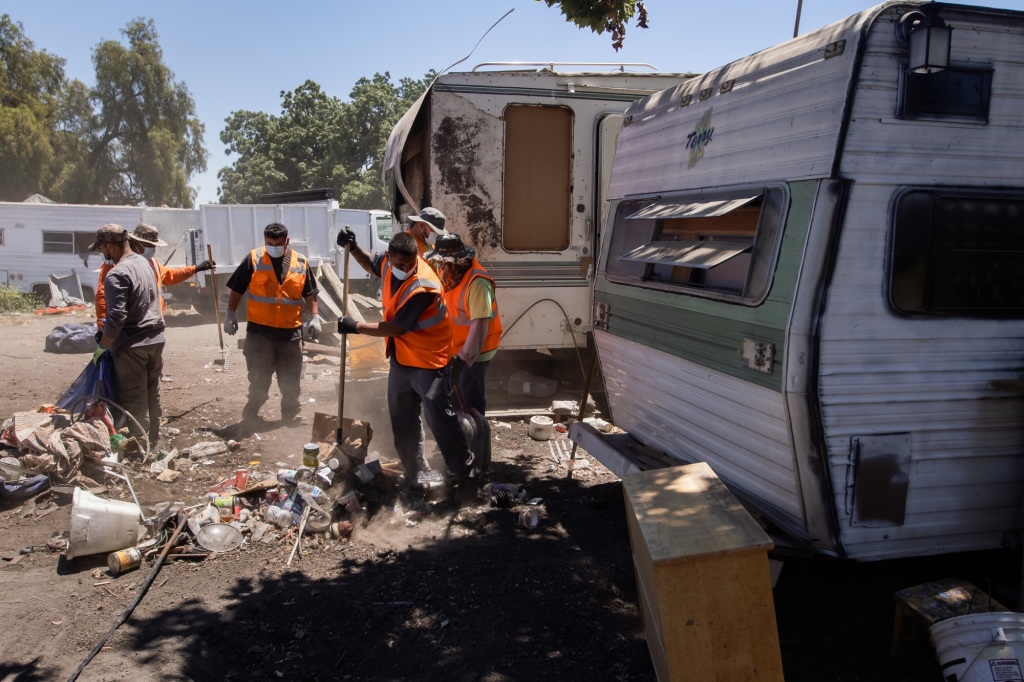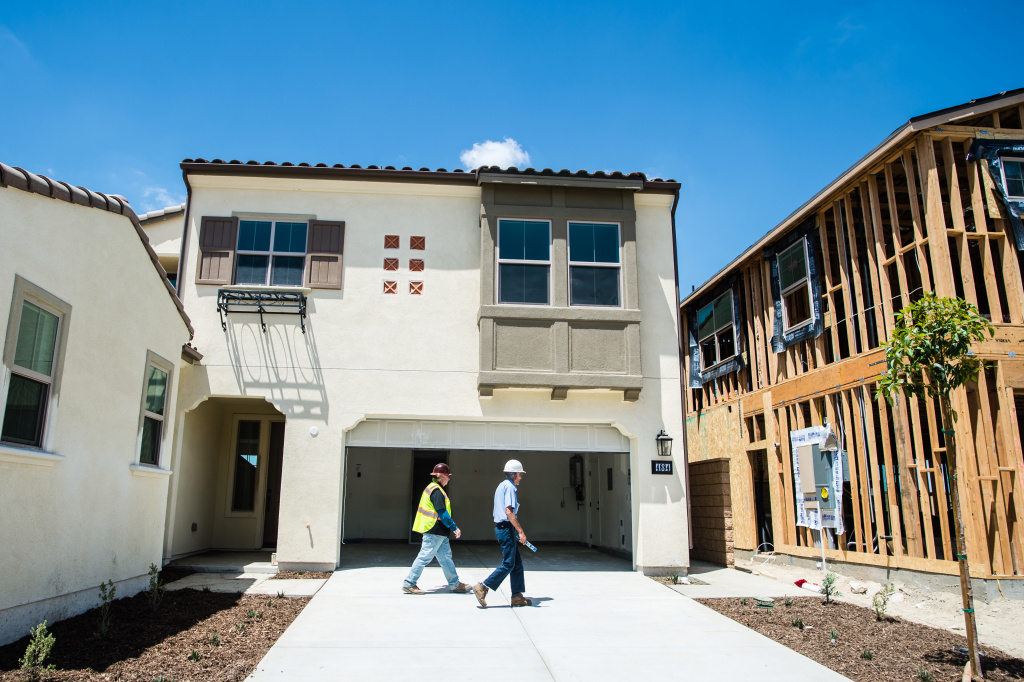SAN JOSE — City leaders want to transform one of the Bay Area’s largest homeless encampments into a dog park, disc golf course and public garden, but first they have to tackle the daunting task of moving more than 100 unhoused residents out.
The sprawling camp of tents, make-shift dwellings and vehicles on 40 vacant acres near San Jose’s airport must be cleared by June 30, per an order by the Federal Aviation Administration. To prevent unhoused people from coming back once the space is cleared, and to open the land up for public use, city staff have proposed a development plan that would include a 5.5-acre dog park, a 9.5-acre area for disc golf, and wildflower meadows that could later be turned into community gardens and urban farms.
But with a shortage of housing options available, city staffers say it’s unlikely they will meet the June 30 deadline. That realization has left officials scrambling to find more beds.
“All of our ambitions with this park are certainly worthy, but the most critical aspect is dealing with the human need that is there on display in the park,” Mayor Sam Liccardo said during a City Council discussion Tuesday.
Council members voted unanimously to pursue the proposed revamp of the encampment site, and authorized staff to get community feedback on the plan and seek funding. In April, City Council will consider whether to ask the FAA for an extension of the June 30 deadline.
Council members also voted to move forward with a plan to prevent vehicles from driving on the Guadalupe River Trail, which is supposed to be reserved for pedestrians and cyclists only. As the city has been trying to shut down the airport encampment, some people have relocated their encampments to the nearby trail, which staff says has led to an increase in the dangerous misuse of the trail by vehicles. To prevent that, city staff proposed installing traffic bollards at eight trail entrances, including Taylor Street, West Hedding Street, Coleman Avenue and Seymour Street. Fences also would be installed.
The encampment near Mineta San Jose International Airport grew to as many as 300 people during the COVID-19 pandemic, prompting the FAA to order the airport to clear the camp or risk losing millions of dollars in federal funding. The site was purchased by the city with federal funds to serve as a buffer between the airport and the community in case of a plane crash, and cannot be used as housing.
To prevent people from returning as they clear the camp, city staff initially had recommended installing an eight-foot-tall, $1.5 million fence around the 40-acre lot. But Liccardo and multiple council members opposed that idea, arguing during an October council meeting that fences can be cut through. They directed city staff instead to come up with a plan that revitalizes the space.
The proposal staff came up with — including the vehicle prevention program — would cost an estimated $3.75 million in one-time funds, plus another $1.75 million in ongoing funding. So far, the city has $2.63 million set aside for the project.
But before the revitalization begins, the city is working on clearing the camp one section at a time. The city has yet to remove campers from a final 18 acres between West Hedding and Asbury streets, and Spring Street to the Guadalupe River Trail. About 100 people still live in the camp, according to San Jose Housing Director Jacky Morales-Ferrand. The city and nonprofit HomeFirst so far have moved 54 people into better environments, including 22 who were placed in long-term housing and 27 who were placed in temporary homes.
But “while we are not giving up,” the city doesn’t have enough resources to house everyone in the camp, Morales-Ferrand said.
“To effectively house the people living in Guadalupe Gardens, we need new resources and programs,” she said.
Some of those already are in the works, such as a temporary housing site that will house up to 76 people off West Taylor Street, and is expected to be complete by this fall. The city also is hoping for more funding from the state’s Homekey program, which helps turn hotels and other buildings into homeless housing. And Morales-Ferrand is in talks with the county to prioritize people in the airport camp for housing placements.
But 66 households live in RVs and other vehicles in the camp, and are reluctant to accept temporary housing if it means leaving their vehicle. For them, Morales-Ferrand wants to set up a safe parking site. But the city is struggling to find a location.
Multiple activists joined Tuesday’s virtual council meeting to urge the city not to evict camp residents until there is enough housing for all.
“It’s very unlikely there will be enough adequate housing in time for the June 30 deadline, and I’m very concerned that people will be forced out at that point with nowhere to go,” said Becky Moskowitz with the Law Foundation of Silicon Valley.
Others pressed council members to move quickly to disband the encampment. Local resident Alex Shoor, who regularly walks along the Guadalupe River Trail, said removing vehicles from the area is a priority.
“It is a danger to everyone,” he said.
Councilwoman Dev Davis agreed the matter is urgent.
“We absolutely need to get this site cleared,” she said, “and get people housed.”










